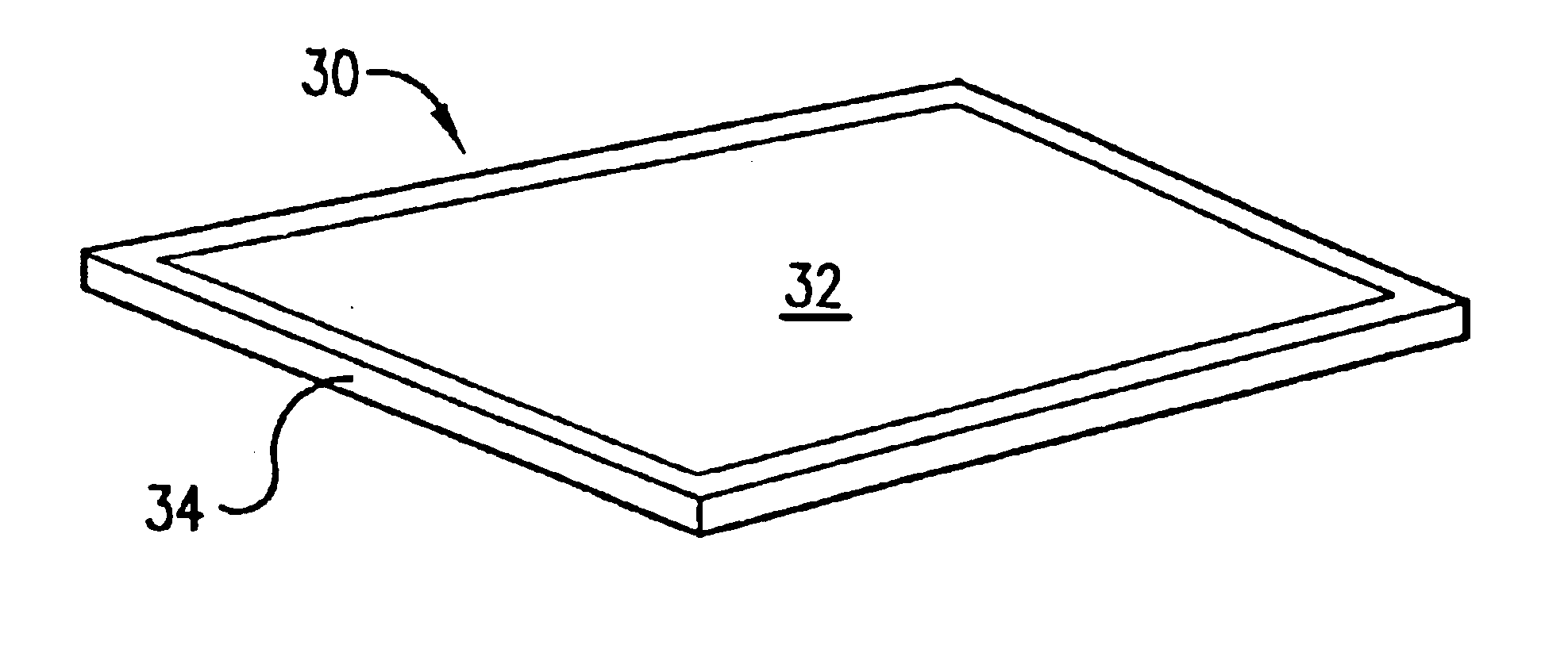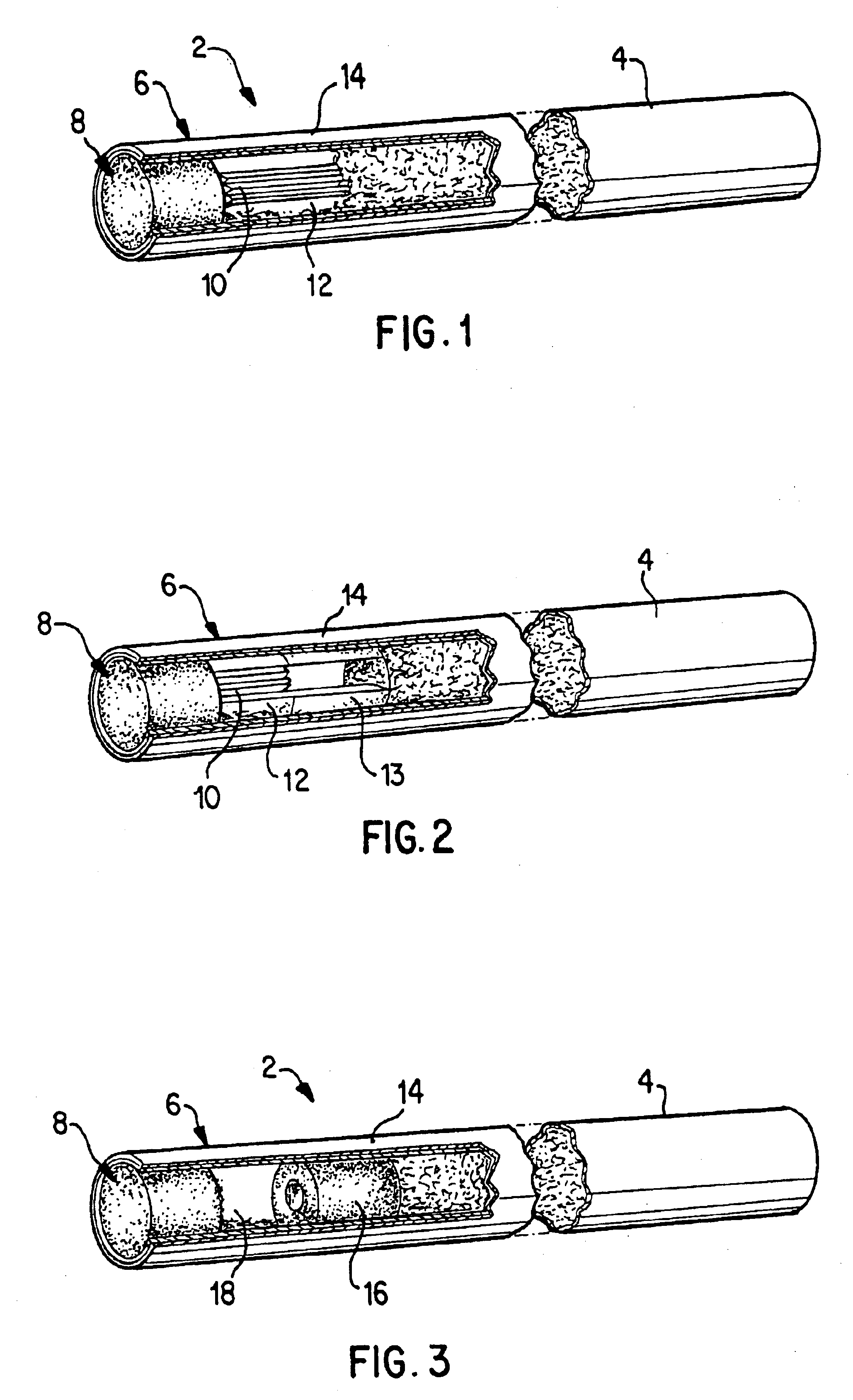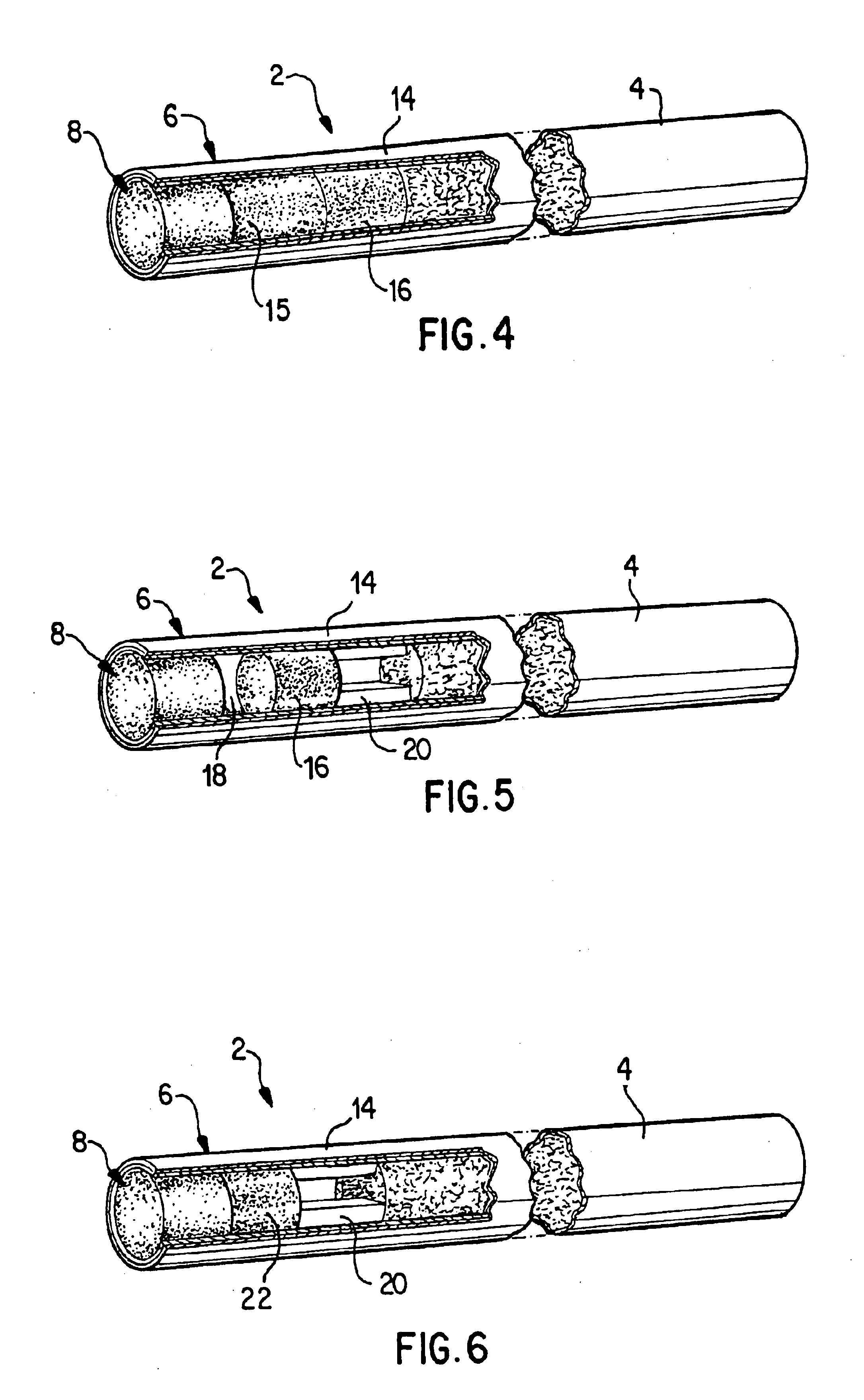Filter for selective removal of a gaseous component
a filter and gaseous component technology, applied in the field of filters, can solve the problems of not being stable in the cigarette filter manufacturing process, only removing tobacco smoke particulates and condensable components, and additives suffering from various drawbacks
- Summary
- Abstract
- Description
- Claims
- Application Information
AI Technical Summary
Benefits of technology
Problems solved by technology
Method used
Image
Examples
experimental examples
Preparation of APS Silica Gel Material
[0060]Grace Davison 646 (35×60 Mesh, 150-angstrom pore size) Silica Gel (circa 1700 to 2000 grams) was placed into a 12-liter Pyrex glass kettle. Distilled water (4 liters) and 95% ethanol (2 liters; 100% ethanol is also acceptable) was added. A clamp-on head had a central neck for the stirring-rod, and three peripheral necks for reagent addition and vapor exit. A stainless steel paddle stirrer was attached to a high-torque (50 inch-pound) digitally controlled stirrer. The high torque stirrer needed to be double-clamped to a sturdy rack system, and served as the point of reference with respect to the kettle. The latter was raised and lowered by a system of “Lab-Jacks,” and positioned precisely with respect to the fixed stirrer-rod. The stirrer blade needs to be fairly close to the kettle bottom, but not touching. The blade must never touch the bottom even during “bumping” induced rebound of the flask / kettle. The flask needs to be restrained to p...
example 1
[0065]Filter sections of cigarettes were constructed in accordance with FIG. 1 and with the tobacco rod section of FIG. 8. A filter section constructed in accordance with the invention identified as Sample 2 contained 16.5 mg of APS silica gel on a folded piece of filter paper 10 (17 mm×23 mm) inserted in the hollow portion of the tubular filter 12. Another filter section constructed in accordance with the invention identified as Sample 3 contained 21 mg of APS silica gel on a folded piece of filter paper 10 (22 mm×23 mm) inserted into the hollow portion of the tubular filter 12. A comparative filter section using a folded piece of the filter paper (17 mm×23 mm) paper (without any APS silica gel) fitted into the hollow portion of the tubular filter was constructed as a control and identified as Sample 1. For Samples 2 and 3, 15 cigarettes were made for TPM measurements and 9 were made for WS measurements. For control Sample 1, 15 cigarettes were made for TPM measurements and 15 for ...
example 2
[0067]Cigarettes similar to those tested in Example 1 included a shorter section containing the APS silica gel. In Samples 1-3, the filter section was constructed in accordance with FIG. 2 and included a 16 mm sleeve 13, a 7 mm sleeve 12, and a 7 mm filter plug 8. The sleeve 12 contained a folded sheet (7 mm×75 mm) of APS silica gel coated or uncoated paper. Three samples identified as control Sample 1 (uncoated paper), Sample 2 (paper coated with 11 mg APS silica gel), and Sample 3 (paper coated with 22 mg APS silica gel) were tested. 15 cigarettes of each sample were made for TPM measurement and 9 for WS measurement. The results are shown in Table 2 below.
[0068]
TABLE 2SAMPLETPMWS13.37(Control)23.14˜69%11 mg reagent32.35˜78%22 mg reagent
PUM
| Property | Measurement | Unit |
|---|---|---|
| Percent by mass | aaaaa | aaaaa |
| Percent by mass | aaaaa | aaaaa |
| Percent by mass | aaaaa | aaaaa |
Abstract
Description
Claims
Application Information
 Login to View More
Login to View More - R&D
- Intellectual Property
- Life Sciences
- Materials
- Tech Scout
- Unparalleled Data Quality
- Higher Quality Content
- 60% Fewer Hallucinations
Browse by: Latest US Patents, China's latest patents, Technical Efficacy Thesaurus, Application Domain, Technology Topic, Popular Technical Reports.
© 2025 PatSnap. All rights reserved.Legal|Privacy policy|Modern Slavery Act Transparency Statement|Sitemap|About US| Contact US: help@patsnap.com



